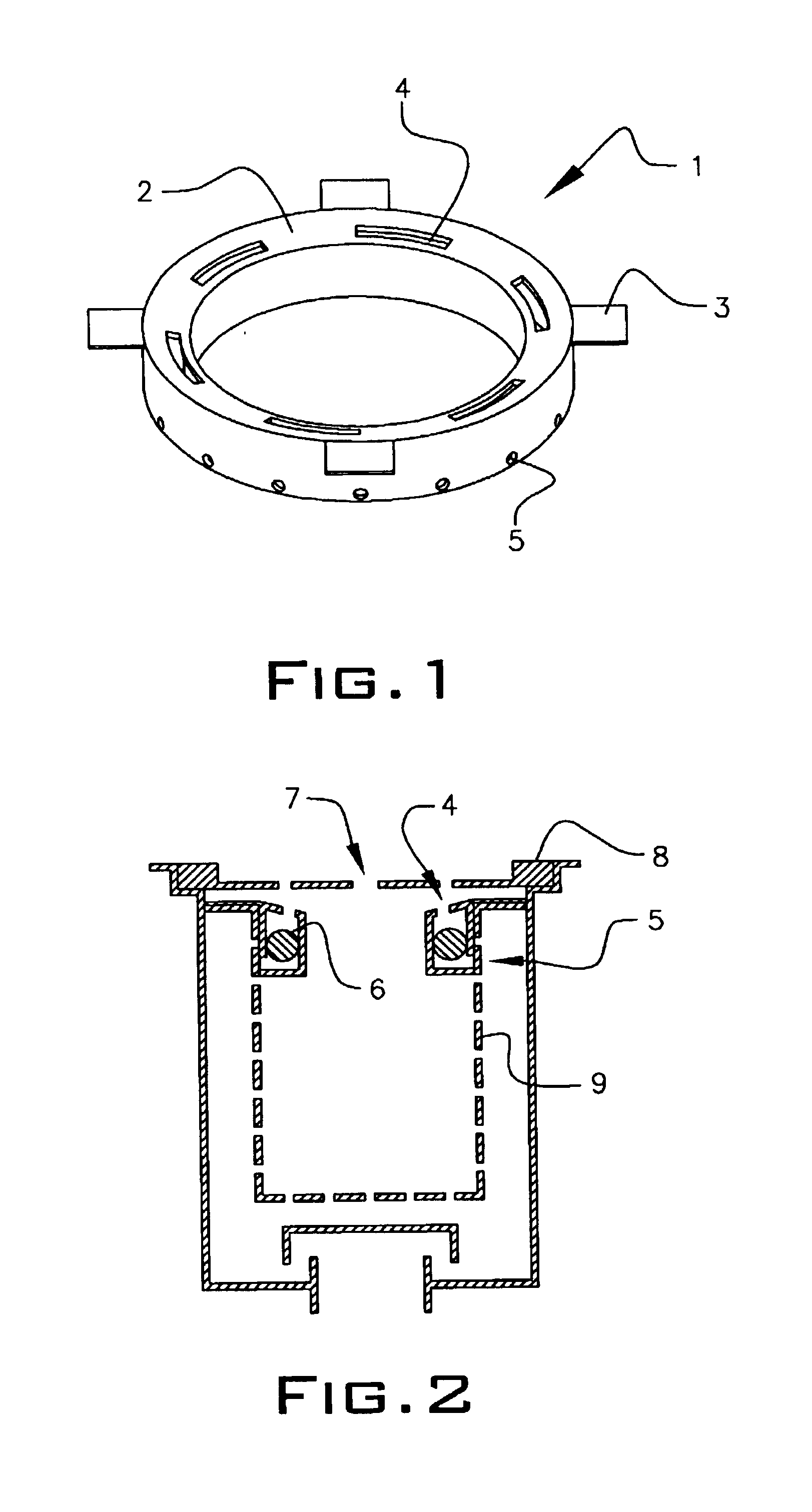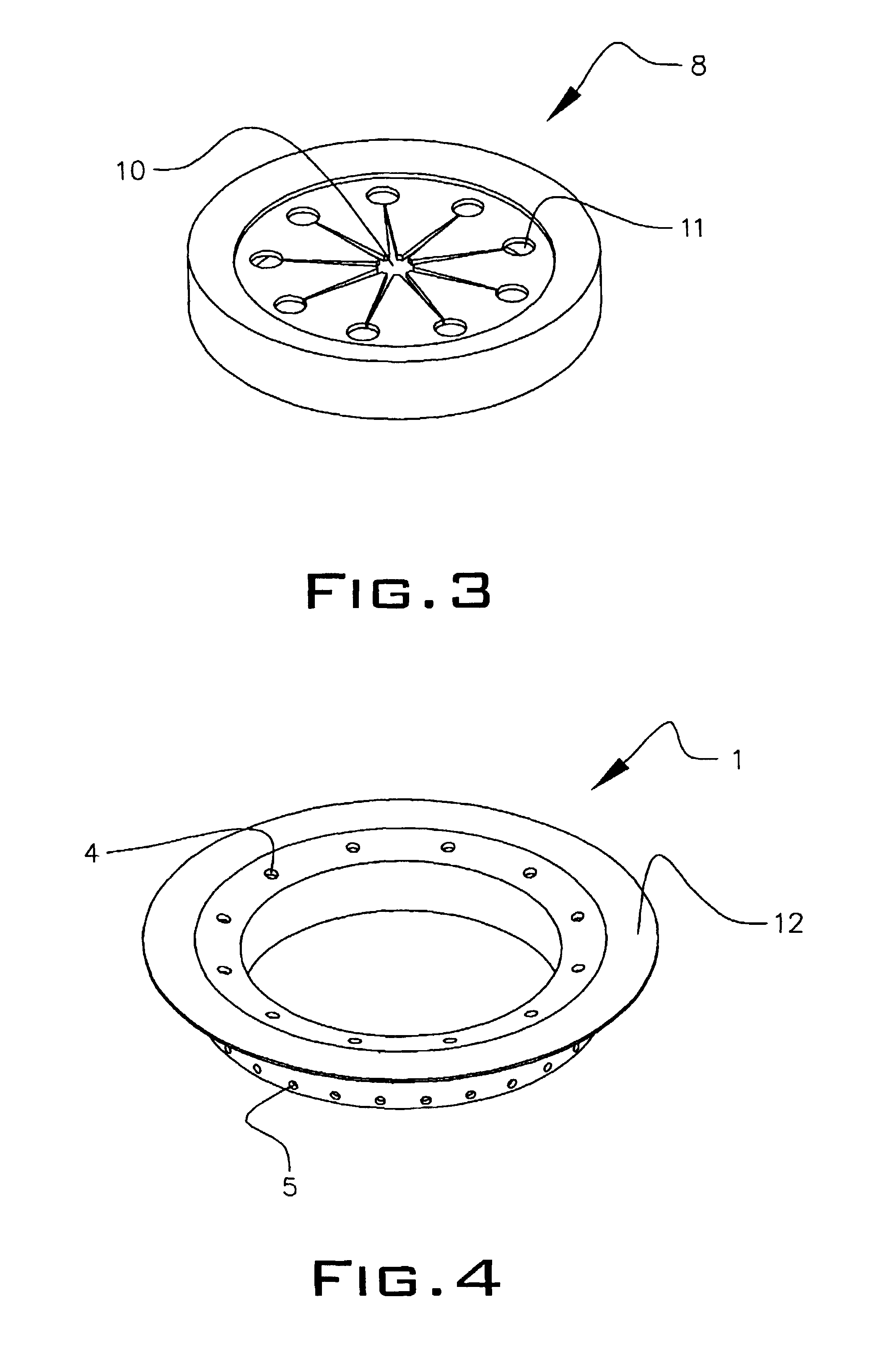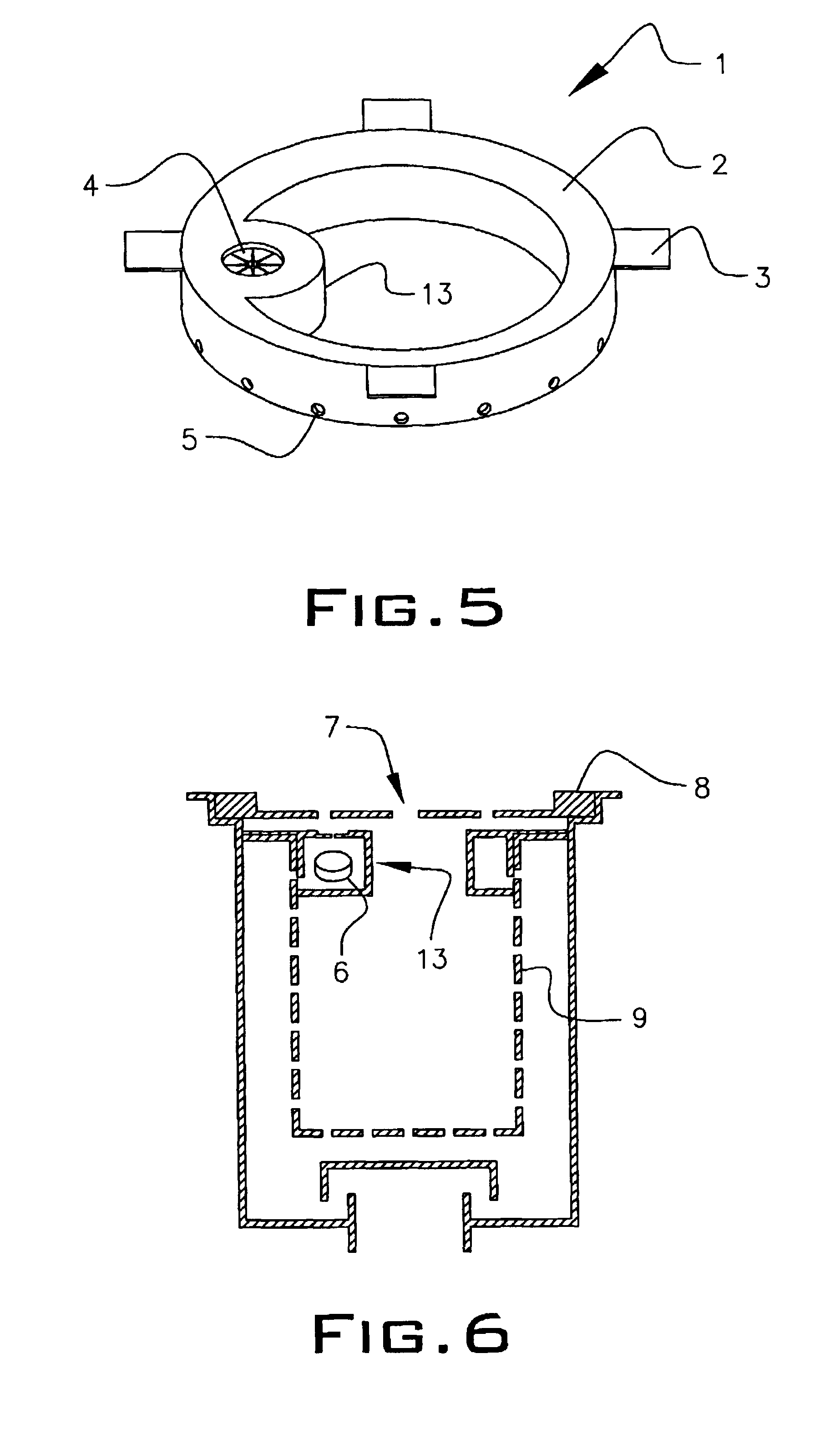Slime remover and slime preventing/removing agent containing a clathrate compound
a technology of slime removal agent and compound, which is applied in the direction of detergent compounding agent, biocide, inorganic non-surface active detergent composition, etc., can solve the problems of weak effect of excellent slime removal agent on the upper part above the chemical installation site, and limit the excellent slime removal effect of the surrounding formulation, etc., to reduce skin irritation, excellent slime removal agent, and water solubility
- Summary
- Abstract
- Description
- Claims
- Application Information
AI Technical Summary
Benefits of technology
Problems solved by technology
Method used
Image
Examples
example 2
[0200]Pressure-molded, solid chemicals of 10 mm in diameter were prepared according to the conditions described below. 24 of them were placed in the container of the slime remover shown in FIG. 21 that had a radially cut rubber filter with a chemical storage [container drainage flow-in hole: 6 drainage flow-in slits consisting of 6 slits of 1.5 mm wide and 10 mm long (upper surface 7 mm and upper part of inner side 3 mm), and container solution flow-out hole: 9 holes of 3 mm in diameter in the bottom, 6 holes of 1.5 mm wide×5 mm long in the upper part of the inner side and 6 holes of 2 mm wide×3 mm long in the upper part of the outer side]. The slime remover of the present invention was installed in a household kitchen sink for 2 months for a monitoring test. It was confirmed that no garbage entered into the container, and slime was prevented from generating on the garbage filter, garbage basket, the inner surface of the drainpipe and the like, over the 2 months.
(Chemical Compositio...
example 3
(Preparation of Samples)
[0202]Each of the samples of cylindrically molded products of 10 mm in diameter was prepared by pressure molding from each of the mixtures of blending ratios shown in Table 1. In Table 1, “TEP-CMI” refers to a clathrate compound prepared by the reaction between 2 moles of 5-chloro-2-methyl-4-isothiazolin-3-one as a guest antimicrobial agent and 1 mole of 1,1,2,2-tetrakis(4-hydroxyphenyl)ethane as a multi-molecular host compound; “Bronopol” is an antimicrobial agent, 2-bromo-2-nitropropan-1,3-diol; “TIAA” is 2,3,3-triiodoallyl alcohol, and “HPC” is a binder, hydroxypropyl cellulose.
[0203]
TABLE 1Sam-Sam-Sam-Sam-Sam-Sam-Sam-Sam-Sam-Sam-ple 1ple 2ple 3ple 4ple 5ple 6ple 7ple 8ple 1*ple 2*Benzoic acid95CaSO□0.5H2O608035Acetoacetate-9555o-toluidideAcetoacetate-90p-toluidideAcetoacetate-85o-anicidideSorbitol98Lactose224735TEP-CMI5555555Bronopol10TIAA10Trichloro-99isocyanuricacidSodiumdichloro-isocyanurateHPC8108105Lauric2233acid powderStearic3acid powderCalcium0.20....
PUM
| Property | Measurement | Unit |
|---|---|---|
| length | aaaaa | aaaaa |
| length | aaaaa | aaaaa |
| melting points | aaaaa | aaaaa |
Abstract
Description
Claims
Application Information
 Login to View More
Login to View More - R&D
- Intellectual Property
- Life Sciences
- Materials
- Tech Scout
- Unparalleled Data Quality
- Higher Quality Content
- 60% Fewer Hallucinations
Browse by: Latest US Patents, China's latest patents, Technical Efficacy Thesaurus, Application Domain, Technology Topic, Popular Technical Reports.
© 2025 PatSnap. All rights reserved.Legal|Privacy policy|Modern Slavery Act Transparency Statement|Sitemap|About US| Contact US: help@patsnap.com



